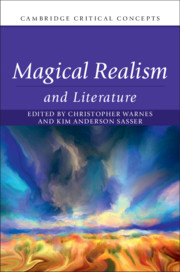Book contents
- Magical Realism and Literature
- Cambridge Critical Concepts
- Magical Realism and Literature
- Copyright page
- Contents
- Contributors
- Introduction
- Part I Origins
- Chapter 1 Magic and Otherness
- Chapter 2 Primitivism, Ethnography and Magical Realism
- Chapter 3 Magical Realism and Indigeneity
- Chapter 4 Insubstantial Selves in Magical Realism in the Americas
- Chapter 5 Space, Time and Magical Realism
- Part II Development
- Part III Application
- Bibliography
- Index
Chapter 3 - Magical Realism and Indigeneity
From Appropriation to Resurgence
from Part I - Origins
Published online by Cambridge University Press: 22 October 2020
- Magical Realism and Literature
- Cambridge Critical Concepts
- Magical Realism and Literature
- Copyright page
- Contents
- Contributors
- Introduction
- Part I Origins
- Chapter 1 Magic and Otherness
- Chapter 2 Primitivism, Ethnography and Magical Realism
- Chapter 3 Magical Realism and Indigeneity
- Chapter 4 Insubstantial Selves in Magical Realism in the Americas
- Chapter 5 Space, Time and Magical Realism
- Part II Development
- Part III Application
- Bibliography
- Index
Summary
This chapter explores the controversial relationship of magical realism to indigeneity from its beginnings in indigenismo in mid-twentieth century Latin America to that of contemporary indigenous writers in Australia and the Americas. It reveals that the relationship of magical realism to both indigeneity and indigenous writing is fraught with cultural politics that reflect the political challenges faced by indigenous communities in relation to settler culture. This is explored in three parts: firstly, through considering the appropriation of indigenous ideas and motifs into early magical realist; secondly, through the propensity of critics in postcolonial studies to identify works by indigenous writers incorporating traditional stories as magical realist; and finally, through the writing of Alexis Wright (Waanyi) and Eden Robinson (Haisla), who create a new direction in magical realism that is embedded in local indigenous cultural systems and simultaneously draws upon the transcultural hybridity within contemporary indigenous life.
Keywords
- Type
- Chapter
- Information
- Magical Realism and Literature , pp. 49 - 63Publisher: Cambridge University PressPrint publication year: 2020
- 1
- Cited by



